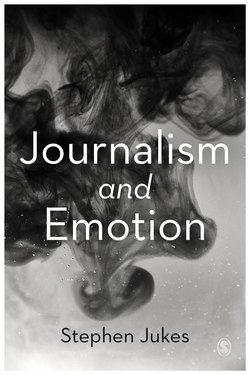Читать книгу Journalism and Emotion - Stephen Jukes - Страница 19
На сайте Литреса книга снята с продажи.
Post-War norms consolidated
ОглавлениеIt was against this background that the Hutchins Commission on Freedom of the Press, set up during World War II, consolidated still further the normative path for American journalism in the immediate post-war period.
The report (1947: vi) set out not only the requirement for a free press, but also the duty on the press to serve the public good, stating clearly in its introduction:
This report deals with the responsibilities of the owners and managers of the press to their consciences and the common good for the formation of public opinion.
This championing of journalistic autonomy, standards and public service was anchored by adherence to the codes and procedures of objective reporting (Curran, 2011). With hindsight, the Hutchins Commission probably represents the high point in codification of journalistic norms in the Anglo-American sphere and its recommendations set high store by the professionalism of journalists. It recommended that ‘the press use every means that can be devised to increase the competence, independence and effectiveness of its staff’ (1947: 94). Two years later in 1949, the Federal Communications Commission (FCC) introduced what it termed a ‘fairness doctrine’, requiring broadcasters to discuss controversial issues of public interest but also to ensure that contrasting views were aired. This held sway until its elimination in 1987, opening the way for partisan journalism on the airwaves such as the right-wing Rush Limbaugh Show just one year later (Curran, 2011). There was a similar development to Hutchins in the United Kingdom when a 1947–49 Royal Commission described the press as ‘the chief agency for instructing the public on the main issues of the day … the main source from which information, discussion and advocacy reach the public’. The combination of the Hutchins recommendations, ‘fairness doctrine’ and Royal Commission held out the prospect of a rational space in the media for discursive debate that would sustain liberal democratic society.
That idea is still central to today’s discussion on the role of the media, not least because of the influence a decade later of the German philosopher and social theorist Juürgen Habermas. Representing a second generation of the Frankfurt School academics, Habermas had sketched out a ‘public sphere’ of rational-critical debate with remarkably similar goals. This public sphere was based on reason, logic and argument. Emotion, on the other hand, was understood as being deviant from the ideals of the public sphere (Wahl-Jorgensen, 2019: 31). Habermas traced the development of this public sphere back to the 18th-century salons, coffee houses and early press. For him it was instrumental in the constitution of a liberal democratic society. But echoing the Marxist roots of the Frankfurt School, he argued that the state and corporate interest, manifested by mass media, public relations and consumerism, had subsequently made this ideal unattainable. Despite this, the translation of Habermas’s theories into an English-speaking academic environment led to discussion of the concept not as an ideal but as a reality (Curran, 2011), though many proponents and critics alike argue it has only ever been an ideal (Kavka, 2008: 53).
